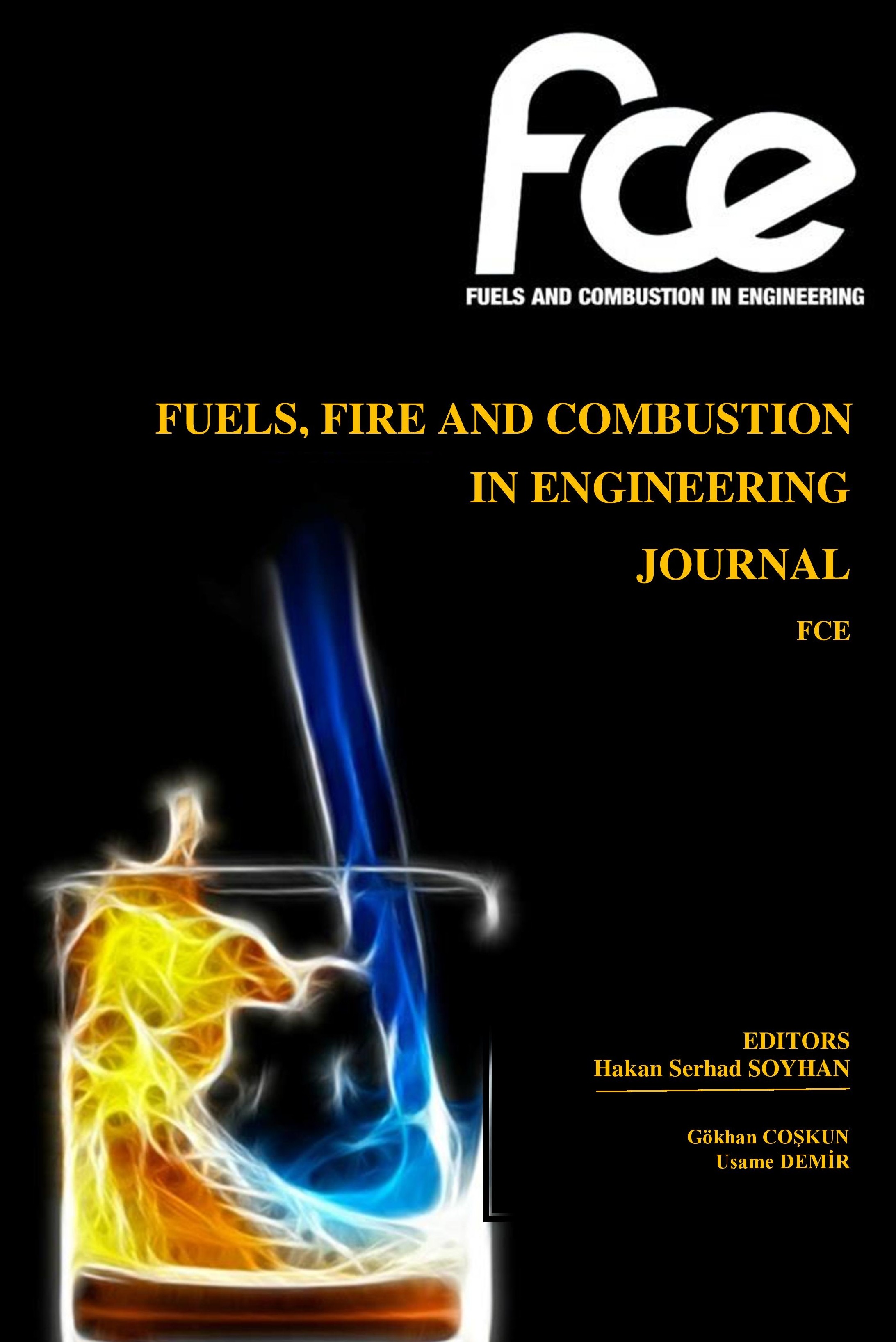Kesit alan geometri etkisinin PEM yakıt hücresinin performansı üzerine incelenmesi
Bu çalışmada, düşük sıcaklıklarda çalışan tek kanallı bir proton değişim membranlı yakıt hücresi modellenmiştir. Hazırlanan model deneysel verilerle karşılaştırılmış ve doğruluğu kanıtlanmıştır. Bu model kullanılarak, kanal yüksekliği sabitken kanal genişliğindeki değişimin hücre performansına etkisi ve kanal kesit alanı sabitken kanal geometrisindeki değişim araştırılmıştır. Reaktantın difüzyon tabakası ile temas ettiği alanın büyütülmesinin performans artışı sağladığı tespit edilmiştir. Ancak düşük voltajlarda çalışırken taban açısı ve kanal genişliğinin artmasıyla artan konsantrasyon kayıplarının azaldığı gözlemlenmiştir.
Anahtar Kelimeler:
PEM yakıt pili, kesit alanı, kanal geometrisi, modelleme
Investigation of the cross-section area geometry effect on the performance of PEM fuel cell
In this study, a proton exchange membrane fuel cell operating at low temperatures with a single channel is modeled. The prepared model has been compared with experimental data and its accuracy has been proved. Using this model, the impact of the change of the channel width on the cell performance with the channel height being constant and the change of the channel geometry with the channel cross-sectional area being constant was investigated. It has been found that the enlargement of the area where the reactant contacts the diffusion layer provides an increase in performance. However, when working at low voltages, it has been observed that increasing concentration losses decrease with increasing base angle and channel width.
Keywords:
PEM fuel cell, Cross-section area, Channel geometry, Modeling,
___
- [1] A. C. Turkmen, C. Celik, “The effect of different gas diffusion layer porosity on proton exchange membrane fuel cells,” Fuel, 222, pp. 465-474, 2018.
- [2] A. C. Turkmen, “Determination of thermal conductivity coefficient in gas diffusion layers and development of the nonisothermal model of proton exchange membrane fuel cell,” Master thesis, Kocaeli University, Turkey, 2018.
- [3] D. H. Ahmed, H. J. Sung, “Effects of channel geometrical configuration and shoulder width on PEMFC performance at high current density,” Journal of Power Sources, 162(1), pp. 327-339, 2006.
- [4] I. Khazaee, “Experimental investigation and numerical comparison of the performance of a proton exchange membrane fuel cell at different channel geometry,” Heat and Mass Transfer, 51, pp. 1177–1187, 2015
- [5] I. Khazaee, “Improvement the equation of polarization curve of a proton exchange membrane fuel cell at different channel geometry, Heat and Mass Transfer, 51, pp. 1681–1689, 2015.
- [6] I. Khazaee, H. Sabadbafan, “Numerical study of changing the geometry of the flow field of a PEM fuel cell,” Heat and Mass Transfer, 52, pp. 993–1003, 2015.
- [7] X. D. Wang, G. Lu, Y. Y. Duan, and D. J. Lee, “Numerical analysis on performances of polymer electrolyte membrane fuel cells with various cathode flow channel geometries,” International Journal of Hydrogen Energy, 37(20), pp. 15778-15786, 2012.
- [8] Z. Harun, A. Etminan, “Numerical Simulation of a Proton Exchange Membrane (PEM) Fuel Cell with Rectangular and Triangular Cross-Section Area Channels,” The International Journal of Advanced Technology, 9(4), pp. 282-288, 2020.
- [9] X. D. Wang, Y. Y. Duan, W. M. Yan, and X. F. Peng, “Effects of flow channel geometry on cell performance for PEM fuel cells with parallel and interdigitated flow fields,” Computational Thermal Sciences, 53(16), pp. 5334-5343, 2008.
- [10] A. Mohammedi, S. Youcef, B. H. Moussa, “3D investigation of the channel cross-section configuration effect on the power delivered by PEMFCs with straight channels,” Fuel, 263, pp. 1167-1195, 2019.
- [11] Q. Yan, H. Toghiani, H. Causey, “Steady-state and dynamic performance of proton exchange membrane fuel cells (PEMFCs) under various operating conditions and load changes,” J Power Sources, 161, pp. 492-502, 2006.
- ISSN: 2564-6435
- Başlangıç: 2016
- Yayıncı: Hakan Serhad SOYHAN
Sayıdaki Diğer Makaleler
Preventing Gasoline Thermal Decomposition
Kesit alan geometri etkisinin PEM yakıt hücresinin performansı üzerine incelenmesi
Anil Can TÜRKMEN, Gulsen ASADOVA, İsmet TIKIZ, Veli ÇELİK, Doç. Dr. Cenk ÇELİK
Hakan Serhad SOYHAN, Muhammed Fatih PEKŞEN, Hakan SAYLAN, Ali Serim AKURGAL
WANKEL MOTORUNUN PERFORMANSININ NUMERİK OLARAK İNCELENMESİ
Bekir ALTIPARMAK, Merve ALTAY, Ali SÜRMEN
Benzin-metanol (M5-M10) karışımlarının SI motorundaki performans üzerine deneysel bir araştırması
Ravi Farkhan PRATAMA, Cahyo Setyo WİBOWO, Nur Allif FATHURRAHMAN, Edy HARTULİSTİYOSO
